You might be a coffee enthusiast, but how knowledgeable are you about coffee varieties?
Coffee varieties are variations of a specific plant species. Like there are thousands of grape varieties in the world of wine, so are there diverse coffee varieties that offer unique flavor profiles and characteristics.
In this article, you’ll uncover a wealth of information surrounding a wide range of coffee varieties. You’ll learn about their origin, taste profiles, and how they affect your coffee experience. Armed with this knowledge, you can confidently explore new beans and talk about your favorite cup like a true connoisseur.
So pour yourself a steaming cup of your preferred brew, and let’s start our journey.
Please note: This article contains affiliate links, meaning I may earn a commission if you make a purchase by clicking a link. Of course, this comes at no extra cost to you and helps me keep offering readers solid information.

Arabica and Robusta: The Main Species
Arabica and Robusta are the two main species of coffee. How do they differ, and what characteristics make each unique? I am breaking this down below!
Arabica coffee (Coffea Arabica) beans are known for their smooth, fruity, and sweet taste. They typically have a lower caffeine content, making them a popular choice for those who enjoy a milder flavor. Additionally, Arabica beans thrive in higher altitude regions and require specific temperatures for optimal growth.
Some notable aspects of Arabica coffee beans include:
- High-quality taste with a delicate, nuanced flavor profile
- Lower caffeine content (around 1-1.5%)
- Grown in cooler, high-altitude environments
- More susceptible to diseases and pests
Now, let’s talk about Robusta coffee. As the name suggests, these beans are sturdier and can withstand warmer temperatures and lower altitudes. They also have a significantly higher caffeine content, bringing a stronger, more bitter taste. Many people find Robusta to be an acquired taste.
Let me mention that Robusta is a variety of the Coffea Canephora species. But, since Robusta is the predominant variation cultivated of this species, the species is usually called by the name of its main variation.
Key points about Robusta coffee beans are as follows:
- Bold, bitter flavor profile
- Higher caffeine content (around 2.2-2.7%)
- Grown in warmer, low-altitude environments
- More tolerant of diseases and pests
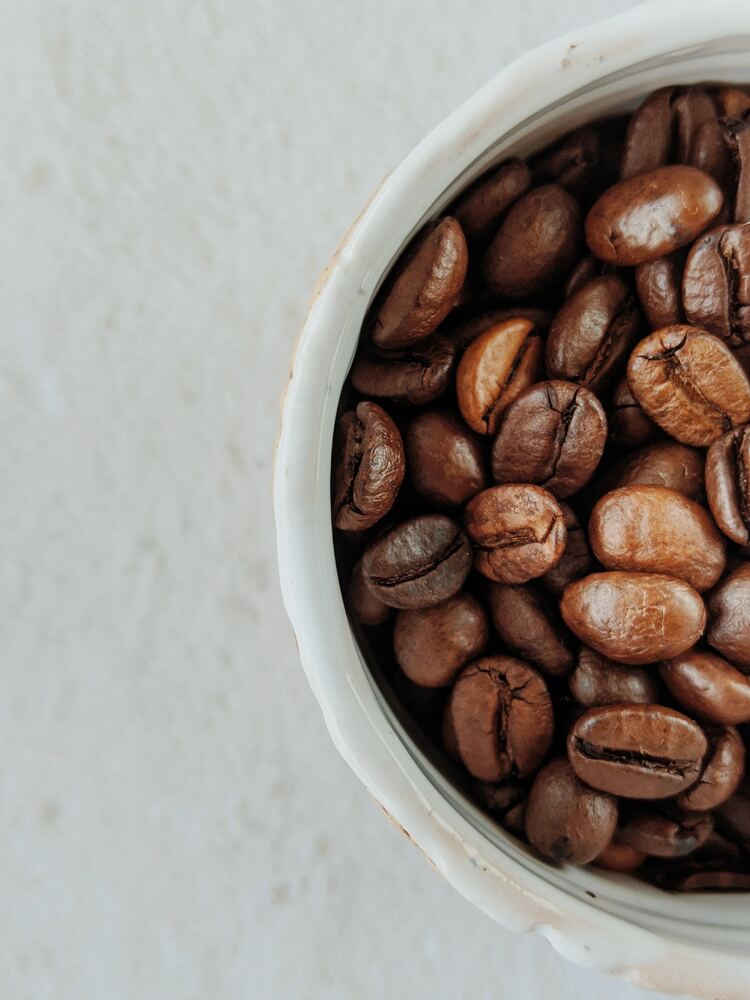
Historical Evolution of Coffee Varieties
You might be surprised to learn that coffee’s origins can be traced back to Ethiopia, where it grew wild for centuries. Ethiopian coffee beans eventually traveled to Yemen in the 15th century, where the Arabic coffee culture flourished. As traders and European explorers took notice of the energizing beverage, coffee’s journey around the world began.
Fast forward to the 18th century, the Dutch played a crucial role in disseminating coffee. They successfully cultivated coffee beans in their colonies in the East Indies, such as on the island of Java. From there, coffee plants were transported to the Island of Bourbon (present-day Réunion), giving birth to the Bourbon coffee variety, further diversifying coffee production.
As coffee gained popularity, it quickly spread to Latin America. The first coffee plants arrived in Brazil in the early 18th century. Today, countries like Brazil, Honduras, and Colombia are significant coffee producers, contributing to the diverse range of varieties and flavors we enjoy in our cups.
Important Coffee Varieties: Origins and Characteristics
This section will discuss some of the most important coffee varieties, their origins, and traits that make them stand out.
Typica is the original Arabica variety and can be traced back to Ethiopia. It has a mild, balanced flavor and is often used as a base in coffee blends. This varietal is well-loved for its clean taste and bright acidity.
Bourbon originated on the island of Bourbon (now Réunion) and is a natural mutation of Typica. It offers a sweet, complex flavor profile with notes of fruit and chocolate. Bourbon is known for its excellent cup quality and is widely grown – especially in Central and South America.
Caturra is a Bourbon mutation commonly found in Colombia, Costa Rica, and Nicaragua. It’s valued for its high productivity and resistance to diseases but has a more acidic and less sweet flavor than Bourbon.
Mundo Novo is a hybrid of Typica and Bourbon, developed in Brazil. It’s drought-resistant and high-yielding, making it a popular choice for farmers. This varietal has a rich flavor with chocolate, nutty, and fruit notes.
Catuai is another Brazilian crossbreed, this time between Caturra and Mundo Novo. The result is a plant with high yield and good disease resistance. It produces a cup with bright acidity, medium body, and fruity undertones.
Gesha (or Geisha) is an Arabica variety originating in Ethiopia that gained fame for its unique flavor profile and rarity. Often considered a luxury coffee, Gesha offers a highly aromatic, floral, and tea-like taste that sets it apart from other varieties.
Catimor blends Caturra with a Robusta variety called Timor, resulting in a high-yield and disease-resistant plant. It’s grown primarily in Indonesia and Central America and has a profile that leans toward lower acidity and medium body.
Blue Mountain is a remarkable Jamaican variety known for its smooth, mild, and well-balanced flavor. With a clean and bright taste, this coffee is often regarded as one of the best in the world.
Though not as common, Liberica is a coffee species primarily harvested in the Philippines. It has a distinct, woody, and smoky taste, different from Arabica varieties.
Finally, Vietnam is a country that primarily produces Robusta coffee, which is known for its intense flavor, low acidity, and higher caffeine content. The beans are usually used in blends that require a strong and bold taste.
By understanding these key coffee varieties and their unique characteristics, you’ll be able to appreciate the nuances and flavors that make each one truly special.
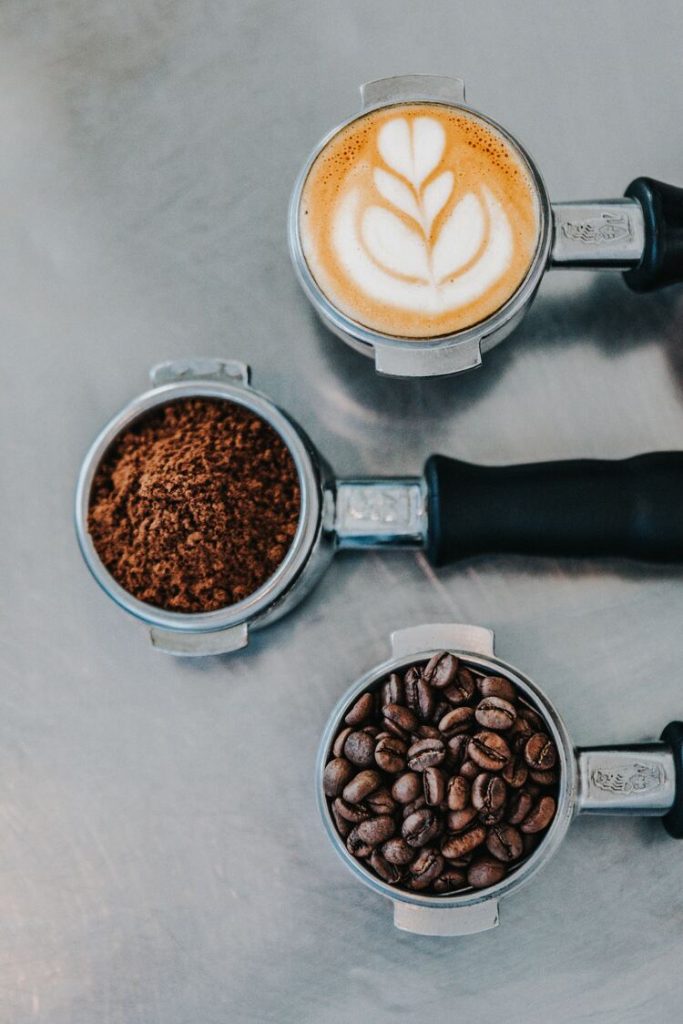
Coffee Tree, Shrub, and Bean Characteristics
You might be surprised to learn that coffee trees can grow up to 30 feet tall. However, most farmers trim them to a more manageable 10-15 feet to make harvesting the beans easier. These evergreen trees have dark green, shiny leaves, and they typically produce their best beans when grown at high altitudes in regions with well-defined rainy and dry seasons.
Coffee trees start producing beans when they’re about 3-4 years old. The beans, or cherries as they’re sometimes called, contain two seeds. These seeds are roasted and ground to make our favorite caffeinated beverage. When ripe and ready to be harvested, the cherries turn from green to bright red.
As mentioned in the first section of this article, there are two main species of coffee trees: Coffea arabica and Coffea canephora (also known as Robusta). Arabica coffee is often considered superior in taste and quality, making up about 70% of the world’s coffee production. Robusta coffee, on the other hand, is more resistant to disease and can grow at lower altitudes with less optimal conditions. It has a higher caffeine content and is often used in blends to create a stronger, more robust flavor.
The characteristics of coffee beans can vary greatly depending on factors such as the varietal, the altitude at which they’re grown, and the processing methods. Here are some common traits you might find in coffee beans:
- Size: Bean size can range from small and round to large and elongated, and size can affect the taste and brewing process.
- Shape: Beans can have a variety of shapes, from the flat, oval-like shape of arabica beans to the more spherical robusta beans.
- Color: Beans start green and turn yellow, orange, and red as they ripen. Depending on the roast level, roast beans can range from light brown to nearly black.
- Texture: Roasted coffee beans typically have a slightly oily or dry surface, which can impact how the coffee extracts when brewed.
As a coffee enthusiast, understanding the characteristics of the coffee tree, shrub, and beans will help you appreciate the intricate and complex process of producing a delicious cup of coffee.
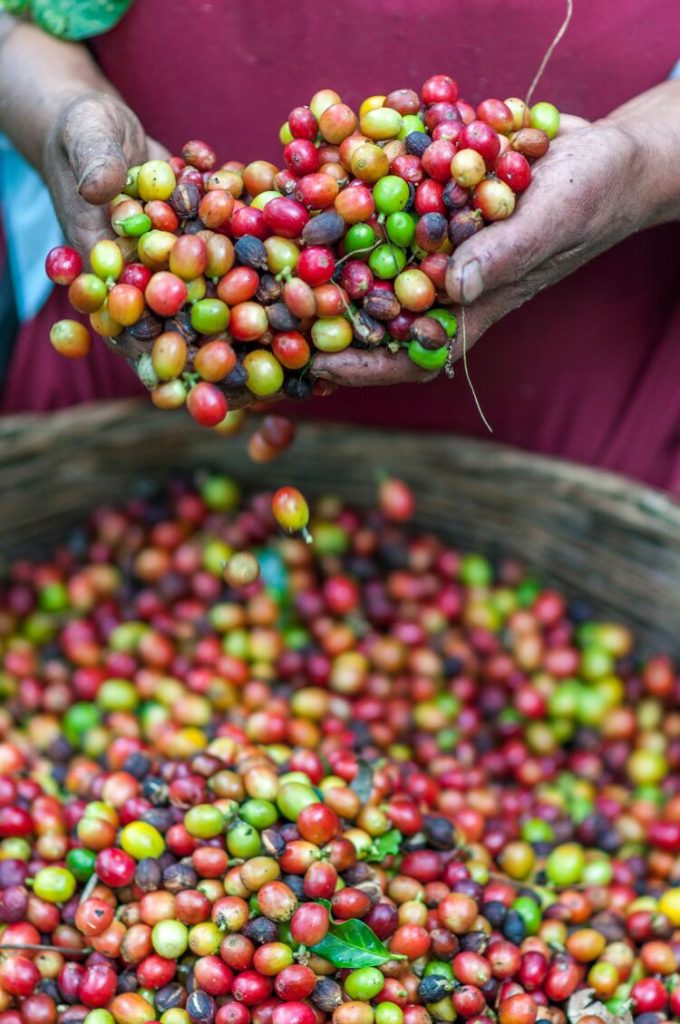
Expanding Genetic Diversity: Hybrids and Cultivars
If we want to get deeper into the world of coffee, we need to discuss hybrids and cultivars, which are essential to expanding the genetic diversity of beans. These special coffee plants bring unique flavors and resist pests and diseases.
Hybrids are a combination of two different species of coffee, such as Coffea Arabica and Coffea Canephora. They often provide the best of both worlds: the flavors of Arabica and the hardiness of Canephora. An example of a hybrid is the Timor Hybrid, which has been involved in many breeding programs.
Cultivars are plants selected for specific desired characteristics and then propagated to maintain those traits. For instance, the Pacamara cultivar, a mix of Pacas and Maragogype, originated in El Salvador. The resulting coffee has an incredible cup profile and a unique bean size.
Regarding disease resistance, cultivars such as Ruiru 11 are diligently bred to withstand pests like nematodes and diseases like coffee leaf rust. Villa Sarchi, another cultivar, is known for its resilience in fighting off pests and adapting to various climates.
To further enhance genetic diversity, F1 hybrids are created by crossing two genetically distinct parent plants to produce a first-generation offspring. These hybrids often possess traits from both parents, making them hardy and unique in flavor.
In summary:
- Hybrids combine two species for enhanced traits
- Cultivars are selected for desirable characteristics
- Disease resistance is a sought-after trait in breeding programs
- F1 hybrids provide further genetic diversity and combine desirable traits
It’s worth exploring these hybrids and cultivars, like Pacamara, Maragogype, and Excelsa, for a diverse and enjoyable coffee experience. Remember these fascinating plants next time you try a new coffee, and you might discover a fantastic new taste in your cup!
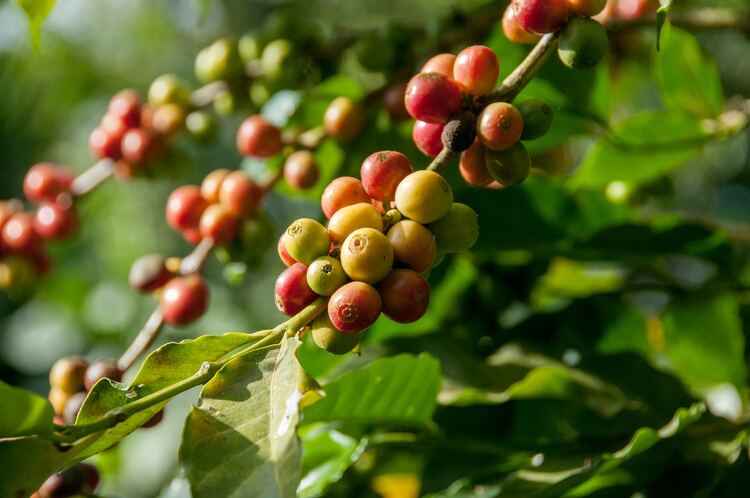
Coffee Production and Farming Practices
When it comes to coffee production, the world offers a wide variety of coffee varieties, with farmers in different countries implementing diverse farming practices. In this section, let’s briefly explore the coffee production landscapes in Brazil, Panama, and Costa Rica, as well as several notable coffee varieties.
Brazil is the largest coffee producer in the world, and its farmers dedicate their livelihoods to growing high-quality coffee. Brazilian coffee farmers often focus on planting Arabica and Robusta, which thrive in the country’s tropical climate.
Panama is renowned for its Geisha coffee variety, which has gained popularity recently due to its unique flavor profile. Panamanian coffee farmers typically utilize sustainable and environmentally friendly farming practices, resulting in a premium product that stands out among other coffee-producing countries.
Costa Rica is another leading coffee producer in Central America, well-known for its Tarrazu coffee beans. Coffee farmers in Costa Rica emphasize biodiversity on their farms and use eco-friendly planting methods to maintain the ecosystem’s natural balance.
Some common coffee varieties you may come across in your coffee journey include:
- SL28 and Kent: These varieties are popular in Africa, particularly Kenya, and have distinct bright, fruity flavors. They can also be found in the coffees of other countries, such as Rwanda and Ethiopia.
- Heirloom: This term collectively refers to the indigenous Ethiopian coffee varieties. Ethiopian farmers take pride in preserving these ancient and unique coffee plants, contributing to the diverse flavor profiles found in Ethiopian coffee.
- Batian: A relatively new variety developed in Kenya, Batian coffee plants are known for their disease resistance, making them an attractive choice for farmers focused on sustainable production methods.

Effects of Environment and Altitude on Flavor and Yield
In this section, we’ll explore how environment and altitude influence coffee varieties.
High altitudes play a significant part in coffee cultivation. According to World Coffee Research, growing coffee at higher elevations can produce more vibrant, complex flavors in the beans. This is because cooler temperatures slow the maturation process, allowing the beans to develop more character and depth. Some examples of regions where high-altitude coffee is grown include the islands of Java and Kona in Hawaii.
On the other hand, low altitudes often yield milder and less distinct flavors. Beans grown at lower elevations tend to ripen more quickly due to warmer temperatures, resulting in a less nuanced flavor profile. However, it’s important to note that other factors, such as soil composition, rainfall, and sunlight, can also influence the taste of your coffee.
When it comes to yield, altitude can have a significant impact on the productivity of coffee plants. Higher altitude environments often experience low yields due to limited resources and challenging conditions. These factors can contribute to smaller crops and reduced overall production. As a result, high-altitude coffee is often viewed as a specialty product with unique flavors and characteristics.
Lastly, it’s worth noting that Arabica coffee plants can be susceptible to environmental changes. These plants, which produce some of the most sought-after specialty coffee, can struggle to adapt to fluctuating conditions. This means a delicate balance of altitude, climate, and resources is even more crucial for these varieties.
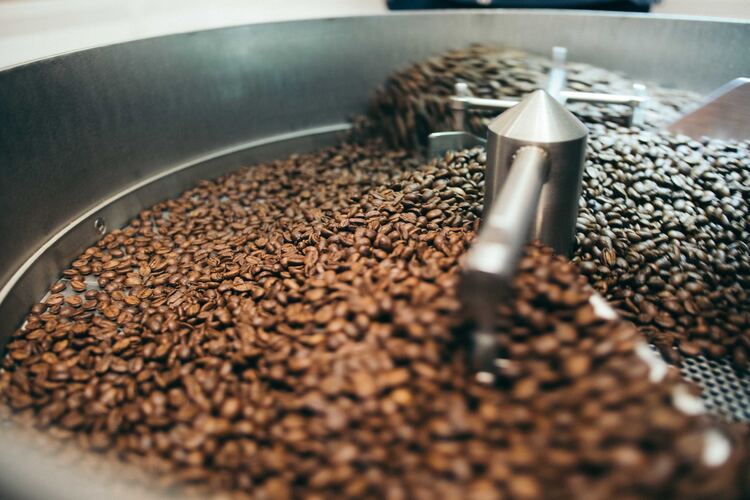
Elevating Taste Profiles
This section will discuss how selecting suitable coffee varieties can elevate the taste profiles and improve your overall experience.
One characteristic to consider is acidity. Acidic coffee might initially sound unappealing, but acidity is essential to high-quality coffee. A pleasant, bright acidity can add a refreshing and lively quality to the cup, enhancing flavors such as citrus, berry, and stone fruits. To experience this, you can try beans from regions like Congo, known for their bright and fruity acidity.
When seeking quality coffee, consider the origin, processing method, and roasting profile. These factors play a significant role in shaping the taste profiles of your coffee. For example, coffee beans from Central and South America typically exhibit chocolate, nutty, and caramel notes, while African beans often present fruity, floral, and wine-like flavors.
To further elevate the taste profiles of your coffee, consider experimenting with brewing methods. Different brewing techniques can accentuate or mute certain flavors in the beans. For instance, a pour-over method using a paper filter may highlight the bright acidity in your coffee, while a French press can produce a heavier body and bring out richer, deeper flavors.

Top Recommendations
If you want to try some of the coffee varieties mentioned in this article, we recommend visiting a specialized coffee shop or distributor.
If you cannot do this for some reason, here are our top recommendations from a well-known online retailer.
Peet’s Coffee, Medium Roast Ground Coffee

Black Rifle Coffee Liberty Roast

Lavazza Perfetto Ground Coffee Blend

Amazon Fresh Colombia Whole Bean Coffee

Frequently Asked Questions
What are the common coffee varieties?
There are two main species of coffee plants, Arabica and Robusta. Arabica is well-known for its mild and nuanced flavors, while Robusta is known for its bold taste and higher caffeine content. You’ll find numerous varieties within these two species, such as Bourbon, Typica, Caturra, and SL28, each with unique characteristics and taste profiles.
How many coffee varieties exist?
There are over 100 known coffee varieties, but only a handful are widely cultivated and consumed. Many are region-specific or found in small quantities, contributing to the diverse world of coffee flavors.
What sets different coffee varieties apart?
Coffee varieties can differ in size, shape, color, taste, aroma, and caffeine content. These differences often result from genetic variations, growing conditions, and cultivation practices, leading to a wide array of coffee experiences.
What is the role of heirloom coffee in the industry?
Heirloom coffee refers to traditional, indigenous varieties passed down through generations. These coffees, often found in countries like Ethiopia and Yemen, are treasured for their unique, complex flavors. They contribute to the diversity of the coffee industry and are sought after by specialty roasters and consumers.
How does single-varietal coffee differ from blends?
Single-varietal coffee consists of beans from one specific variety, allowing you to experience its distinct taste and characteristics. In contrast, blends combine beans from multiple types or regions, creating a harmonious mix of flavors and qualities.
Why is understanding varieties important for coffee enthusiasts?
Knowing about coffee varieties helps you, as a coffee enthusiast, to appreciate the diverse flavors and profiles they offer. It also allows you to make informed decisions when sourcing beans, brewing methods, and tasting experiences, ultimately enhancing your connection to the world of coffee.

Here you have it! I hope you have enjoyed the article.
Tell me, what are your favorite coffee varieties?